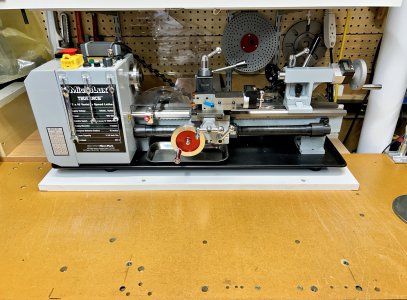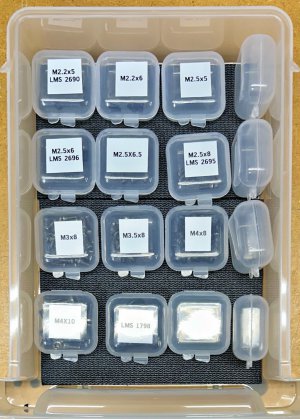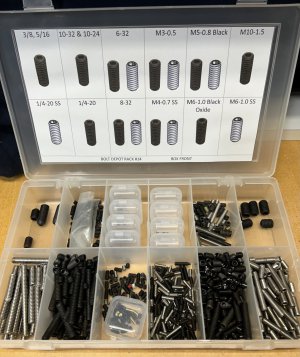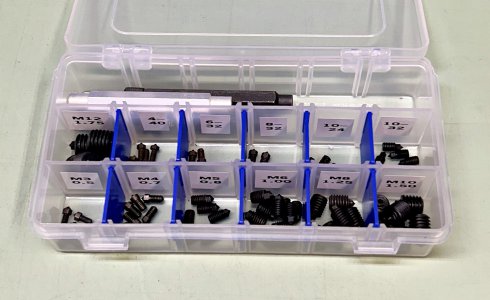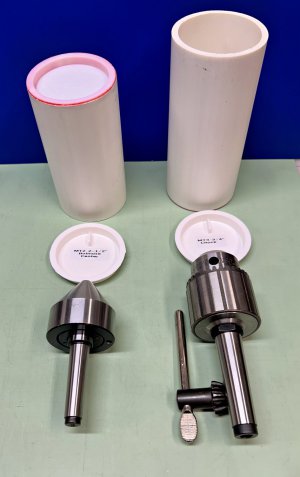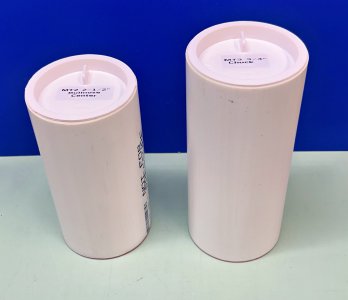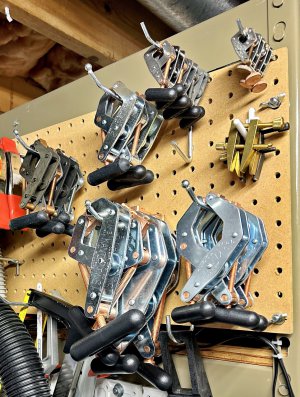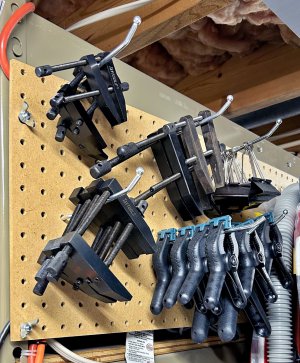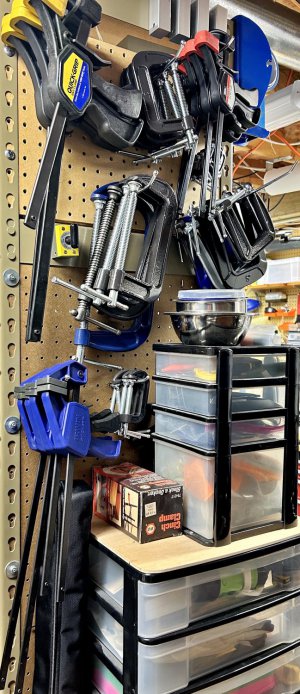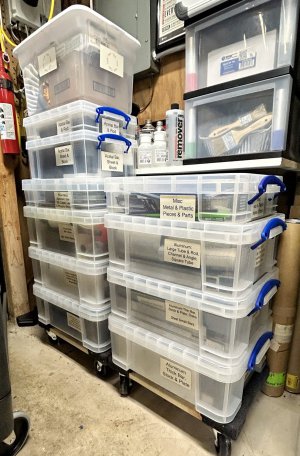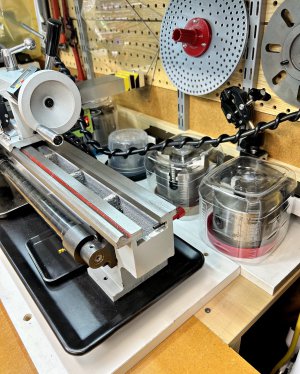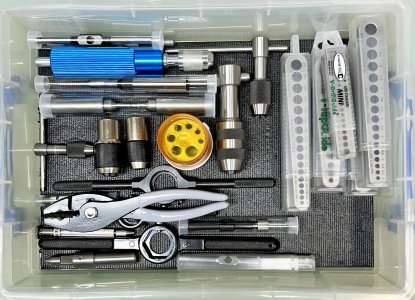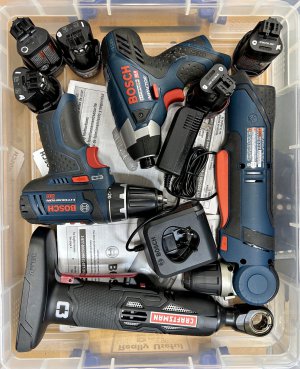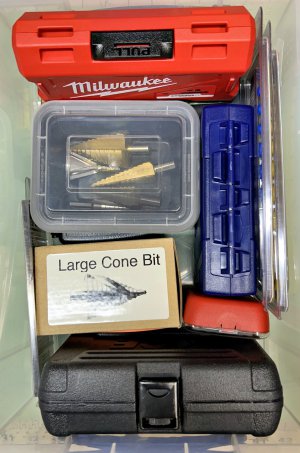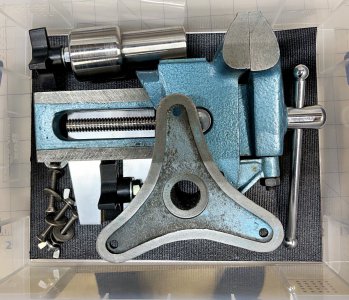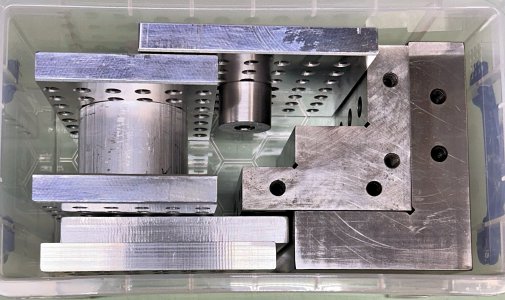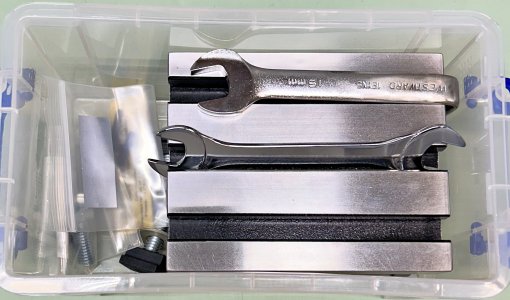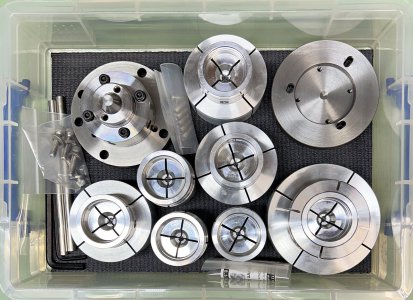Mini-Lathe Chuck Storage
As everyone should know by now, I like things neat & tidy (tickety-boo?). Chuck storage has always been an issue for me – they need to be close at hand, but out of the way, while not taking up space that could better be utilized. At the same, the chucks need to be protected from dust, dirt & swarf. Over the weekend, I came up with a solution that looks like it will work, and here's what I did.
First, I spent some time removing the labels from some plastic "jars" that were wrapped around Kirkland™ Chocolate Covered Almonds (sprayed the labels with Goo-Gone® and let them sit overnight until the labels could be easily peeled off, wiped the jars with 90% Isopropyl Alcohol and gave them a good wash & dry. Then over to the bandsaw:
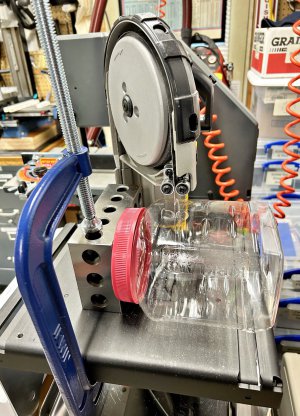
Not the first time I've used a 2-4-6 block as a guide. The sawing went surprising smoothly, and shortly I was left with two pieces:
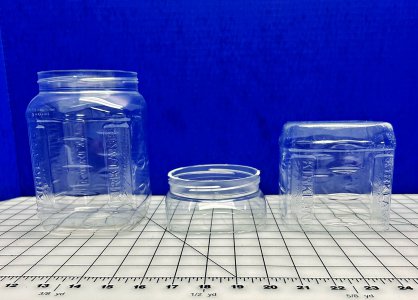
The guide did it's job, and the cut was square (and the two ends of the cut met).
After deburring the cut edges by rubbing them against a green Scotch-Brite™ pad on the bench and some detail work with a small strip of 220 grit emery cloth, my covers were done:
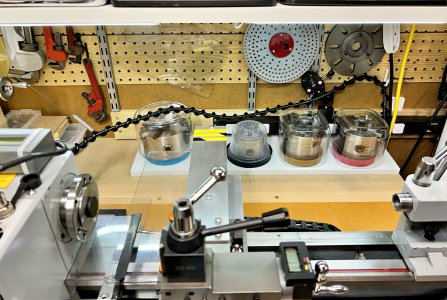
As you can see, I didn't waste the lids: the 4" 3-Jaw & 4-Jaw chucks sit back-down in a lid, and the bottom of the jar is a perfect cover. There is also a 3" 3-Jaw chuck back-down in a lid, but with a 16oz Deli-Cup as a cover. Also seen at the far left of the row is my 5" 3-Jaw, sitting in a larger cap with a clear food storage container used as a lid. The chucks are out of the way, but close at hand, and protected against the elements. When I need bench space, I remove two bolts that secure the lathe baseplate to the bench and push it back against the 1x8 that the chucks are sitting on:
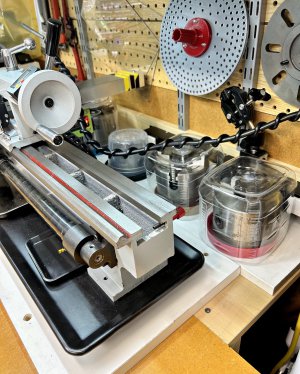
leaving clear bench space (with numerous mounting holes for various portable tools):
